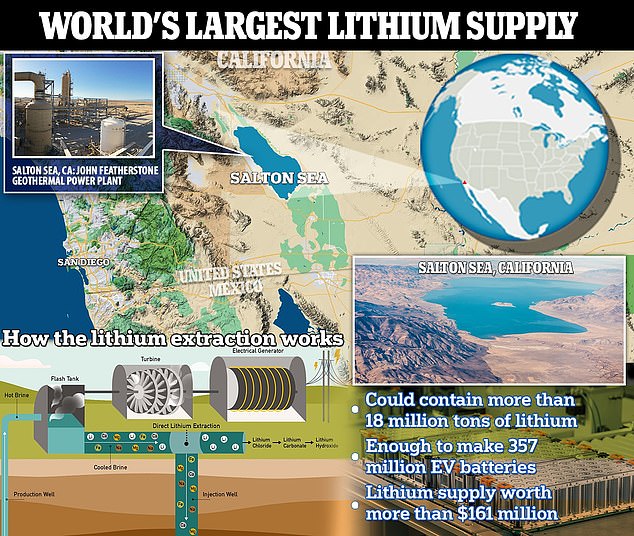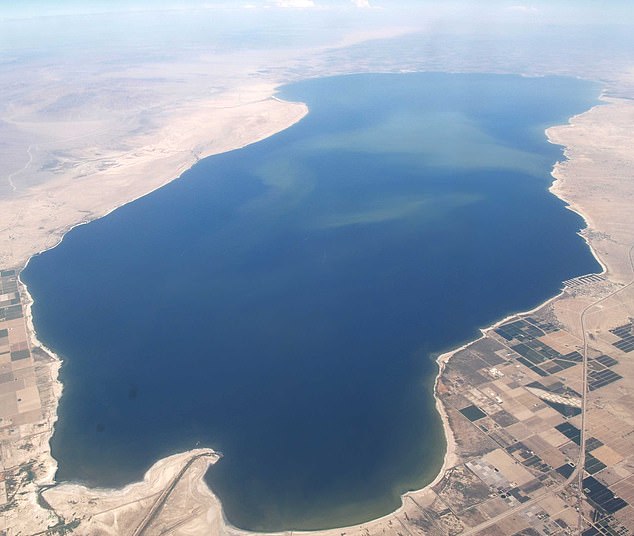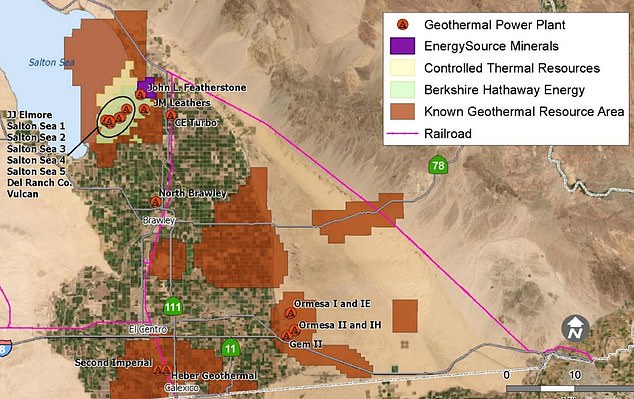A California lake in the Imperial Valley sits atop one of the world’s largest “white gold” mines, but one of the biggest beneficiaries will be an Australian energy company.
Controlled Thermal Resources, founded in 2013, has spent two decades developing and managing energy projects in the valley south of Palm Springs.
Many of those projects generated geothermal energy, an energy source that uses hot temperatures of molten magma deep in the Earth’s crust to drive steam turbines for an environmentally sustainable means of generating electricity.
But in recent years, the company has turned its attention to Southern California’s lithium metal reserves, called white gold because of the smooth, silvery-white appearance of these “lithium salts.”
CTR’s big promise to the California officials who approved the project is a chance to harvest large amounts of lithium to boost America’s energy independence without harming local communities and ecosystems or contributing to global warming, experts say.

Reports say this California salt lake sits above the world’s largest “white gold” mine.


The Department of Energy (DOE) shared results from Lawrence Berkeley National Laboratory, which determined that the underground pool could contain 18 million tons, enough to meet US demand for the valuable metal for decades.
But the U.S. government hopes the project will boost America’s energy independence from the large volume of lithium-ion batteries imported from China.
Lithium is a critical component for batteries that power everything from smartphones to electric vehicles to solar panels, and China has dominated the market for decades because 90 percent of the mined metal is refined in its nation.
With a trade volume of $9.3 billion in 2022 alone, according to the United Nations Comtrade databaseChinese lithium-ion batteries account for the vast majority of US battery imports today.
California regulators, environmentalists, scientists and many of the companies vying for a piece of the Imperial Valley’s burgeoning lithium empire hope to become part of that change without devastating Southern California lands and local people.
“Nothing is going to be completely clean,” as local geochemist Michael McKibben, who teaches at UC Riverside, said. desert sun.
“But this is the cleanest way to do it: using geothermal energy.”
McKibben is currently collaborating with a research team led by Lawrence Berkeley National Laboratory to map lithium deposits and determine the potential ecological and human costs of their extraction.
“Traditional ways of extracting lithium are really destructive and very damaging to the environment of local communities,” McKibben said, “so the appeal of geothermal lithium is that it has a small footprint.”
“You’re not digging wells, you’re not putting huge evaporation ponds on the surface, because the brine has already risen to generate steam,” McKibben said of the lithium-infused saltwater unique to the Salton Sea.
“So it’s just a matter of adding a lithium filter to that brine before injecting it back into the soil.”
CTR, which first announced its Salton Sea lithium project in 2016, ‘redomiciled’ its company to the US in 2022, according to their websiteannouncing that their new headquarters will be located right in Imperial County in California.
But the energy company still maintains an office in Brisbane, Australia.


Three companies will use power plants to extract lithium and extract superheated brine from the ground.


Controlled Thermal Resources (CTR) announced in January that it had recovered lithium from its geothermal brine resource and is now set to build a massive plant at the site (pictured).
However, this Australian expat company is not the only player seeking to extract ecological benefits from the landlocked saltwater lake.
the Salton Sea has been invaded by companies large and small seeking profitable ways to extract the lithium dissolved in its boiling salt water, which flows beneath the lake’s southern end.
Last December, a new study funded by the Department of Energy (DOE) found that the basin has even more lithium than previously estimated, intensifying the race for development contracts with state and local agencies.
The DOE study found there could be 18 million tons of extractable metal. enough to satisfy American demand for the valuable metal for decades.
The findings would make the reservoir the largest in the world, surpassing Chile (home to nine million metric tons).
California Governor Gavin Newsom once described the Salton Sea as “the Saudi Arabia of lithium mining,” and the nickname is a testament to the substance’s immense economic value.
A ton of lithium is currently priced at $29,000, making the supply in the Salton Sea worth more than $540 billion.
The DOE said it could Supports more than 375 million electric vehicle batteries.
Jeff Marootian, principal deputy assistant secretary for energy efficiency and renewable energy, saying: ‘Lithium is vital to decarbonizing the economy and meeting President Biden’s goals of adopting 50 percent electric vehicles by 2030.
‘This report confirms the once-in-a-generation opportunity to build a domestic lithium industry while expanding clean, flexible electricity generation.
“Using American innovation, we can lead the future of clean energy, create jobs and a strong domestic supply chain, and boost our national energy security.”
Earlier this year, after about a dozen years of engineering, permit haggling, and fundraising, CTR finally started construction of its lithium extraction and geothermal energy plant.
‘The work is going to be done by unionized workers. They’ll be good jobs,” President Biden’s clean energy adviser John Podesta, who attended the inauguration, told the meeting. Los Angeles Times.
But despite these big promises, many unknowns remain given the ambitious scope of the project, according to industry experts.
“Lithium has never been extracted from geothermal brines on a scale before,” according to Erik Desormeaux, director of energy efficiency company Energy Recovery, Inc.
‘Therefore, it remains to be seen whether the EV industry, the local community and/or the environment will truly benefit,” Desormeaux said. said The daily beast.
General Motors, at least, is one of the firms that is betting on the success of the project. The automaker has signed commitments to source lithium from CTR, according to Forbesa sign of the palpable desire of American electric vehicle (EV) manufacturers to source lithium for their lithium-ion batteries domestically.
“I think people are very optimistic about the project,” Desormeaux said, “but it’s a lot of wait and see.”

